

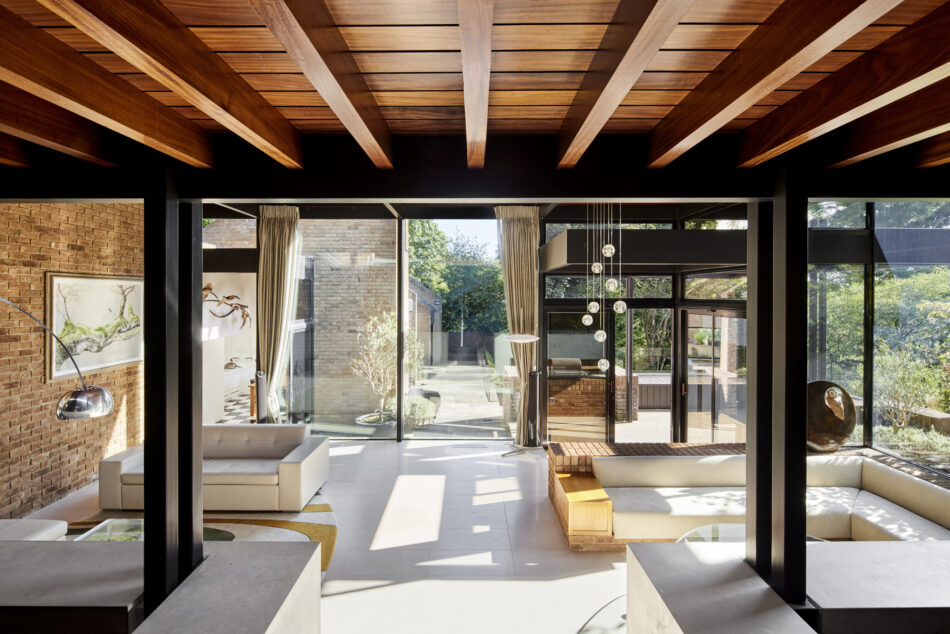






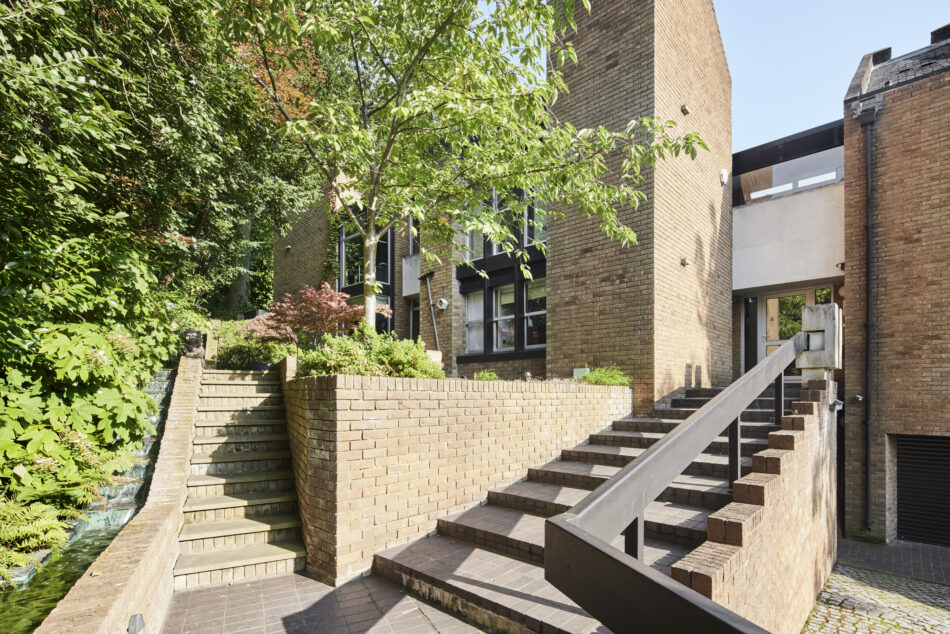
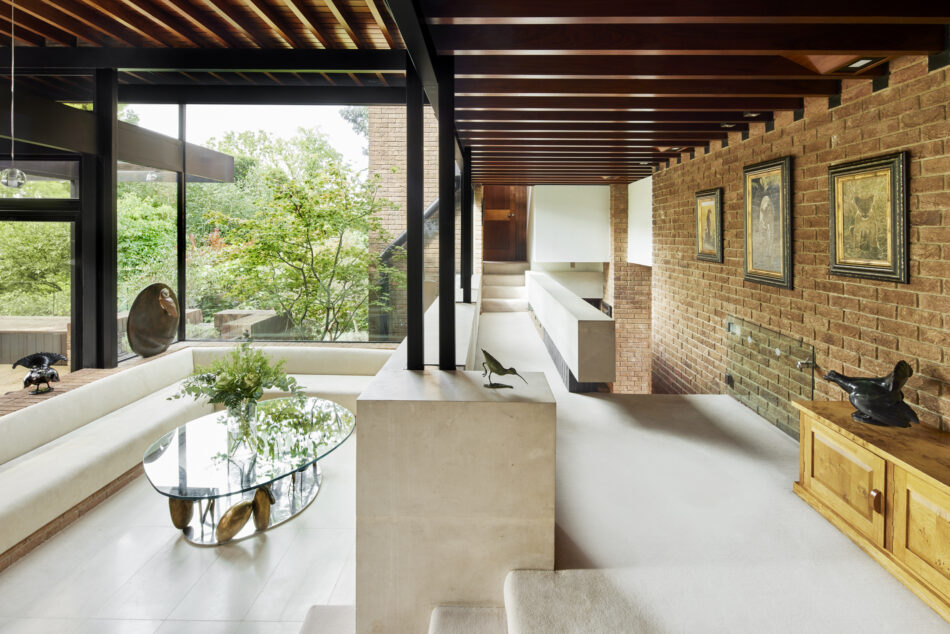

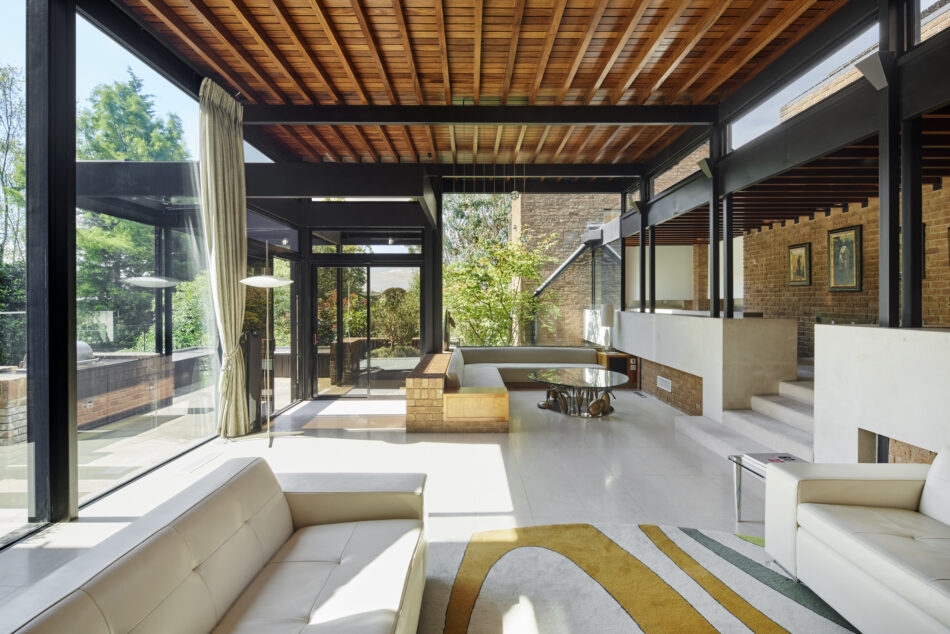


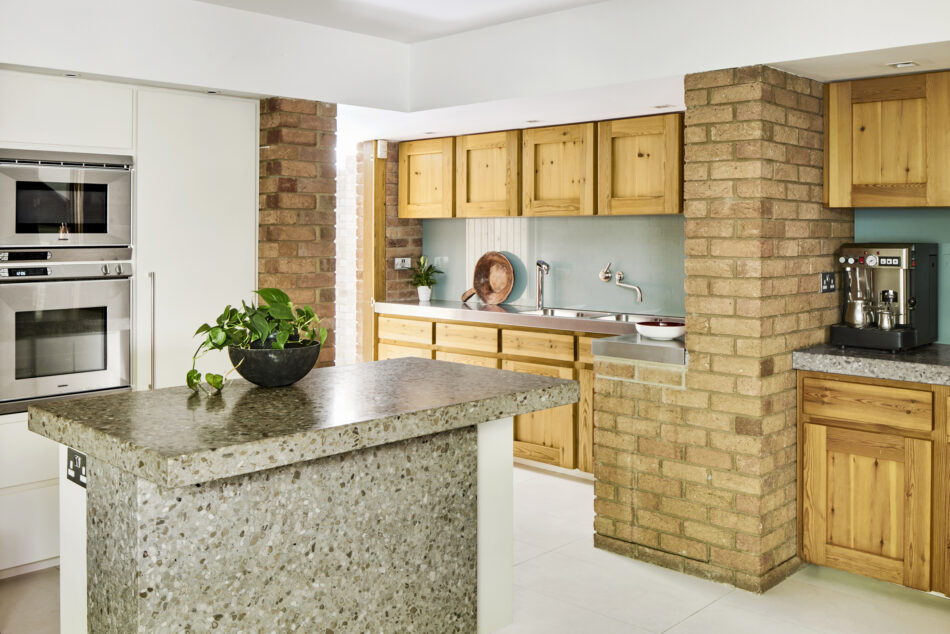


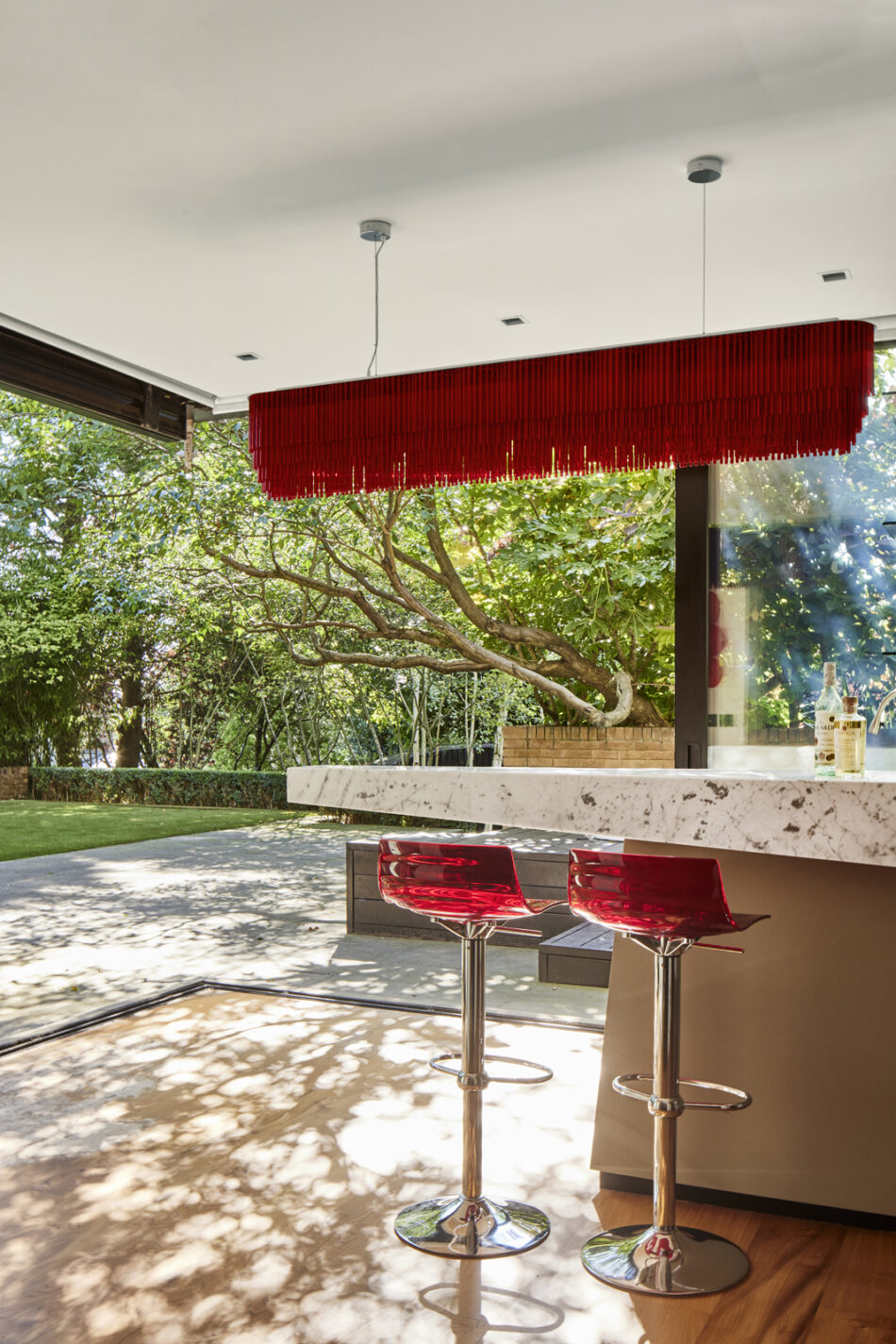
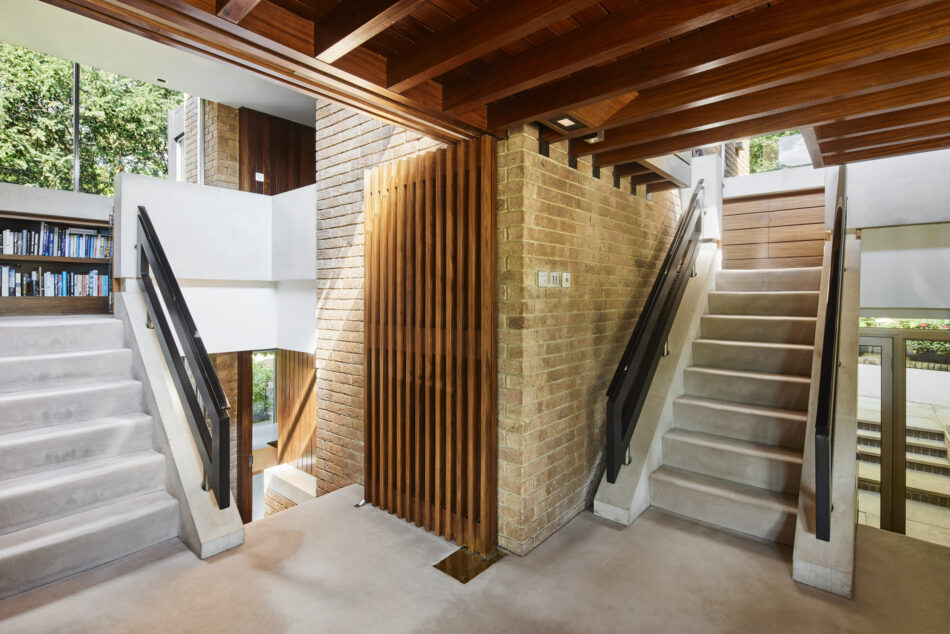

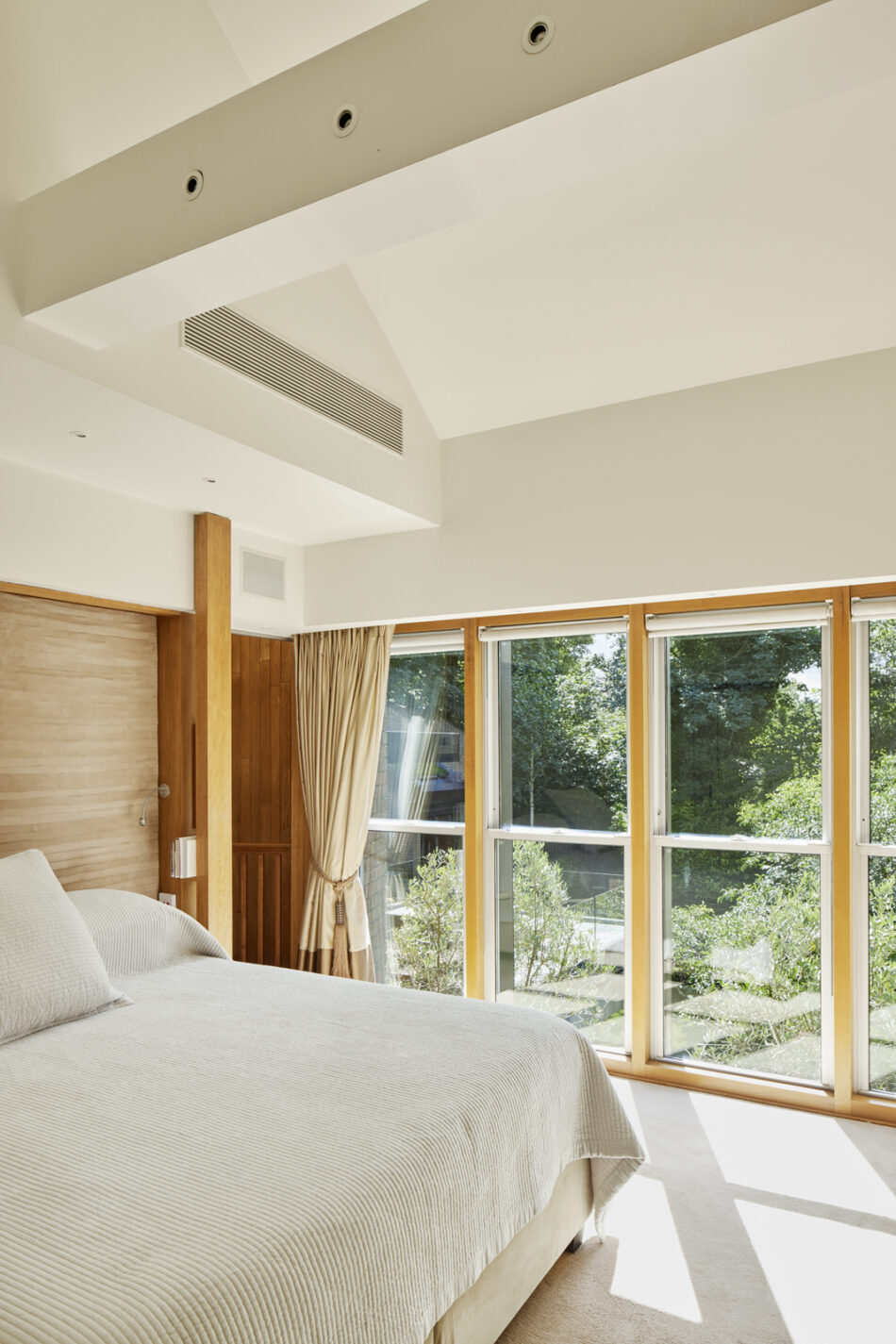

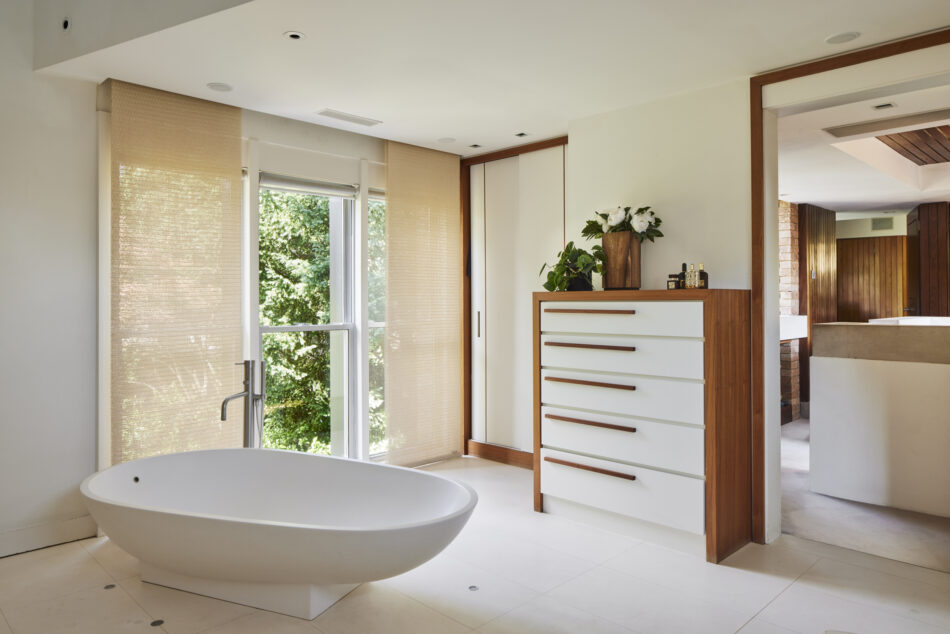







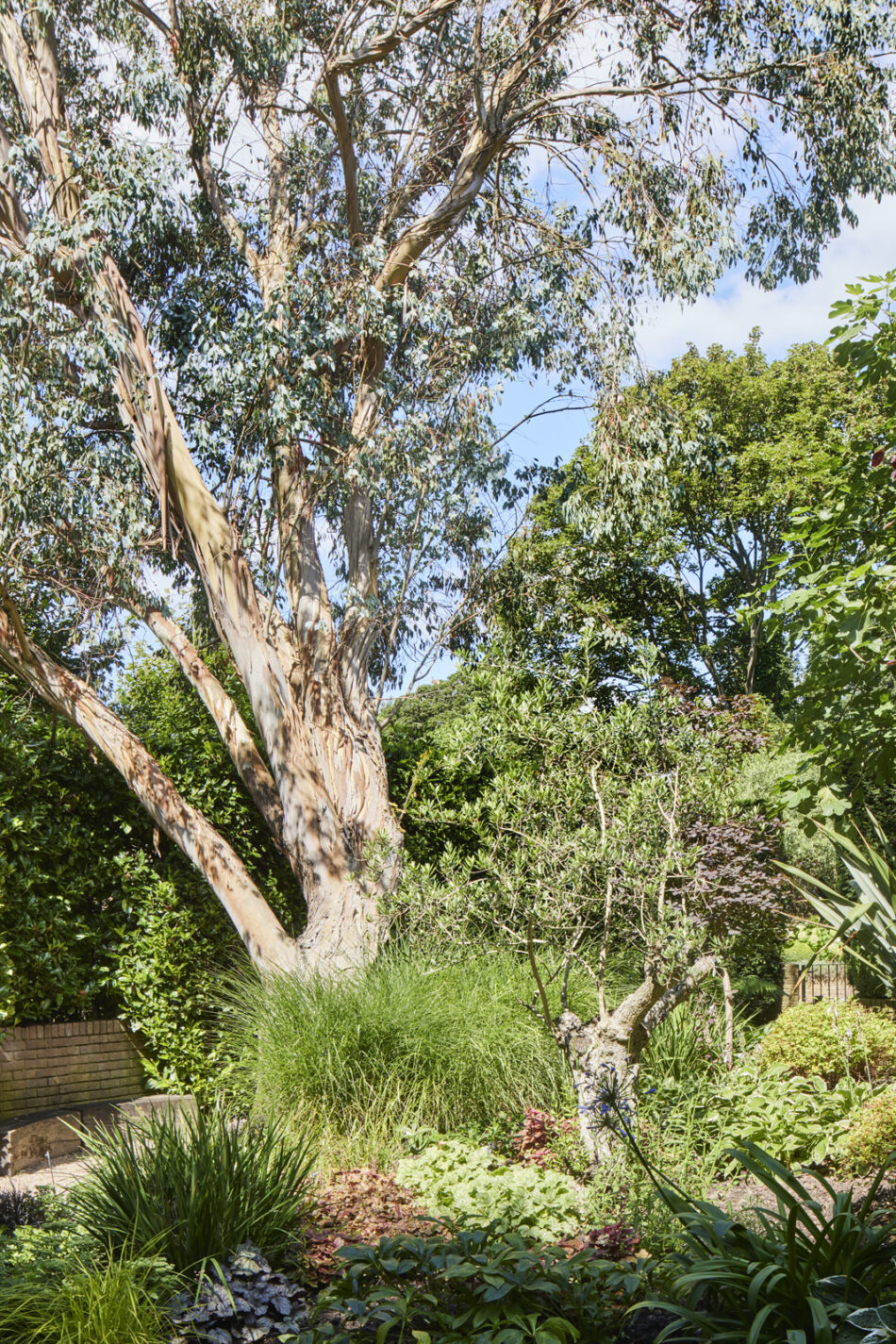
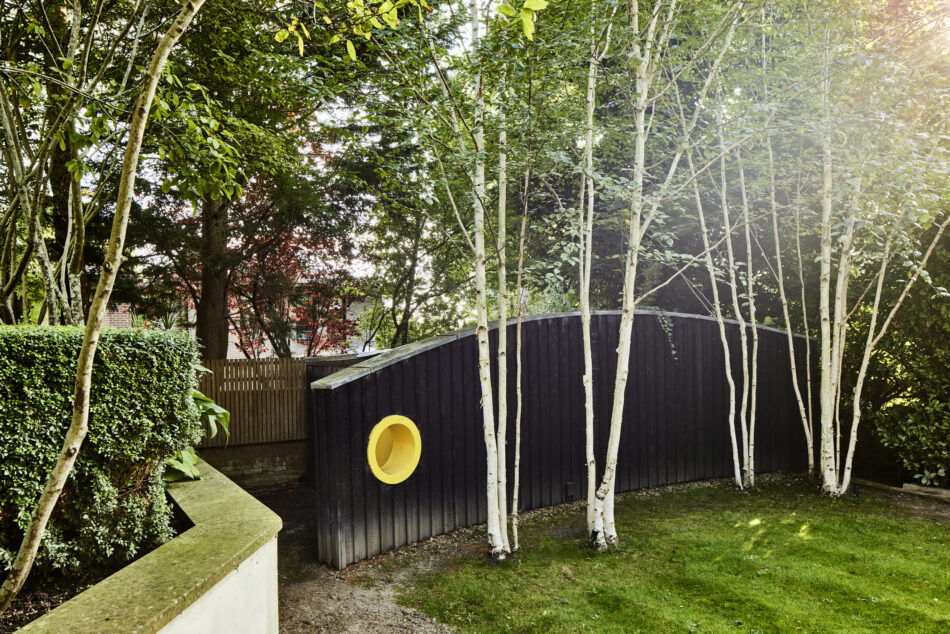
Fitzroy Park II
London N6
Architect: Hal Higgins
Register for similar homesInspire me“It is rare to find a house that succeeds as a dramatic piece of architecture and as a home’’ - Colin Amery, The Architects Journal, 1973
This exceptional Grade II-listed, six-bedroom house has been described as one of the most notable private residences of its time, not least for its brilliance of complexity and spatial ingenuity. It was designed by Hal Higgins of Higgins Ney and Partners and constructed in 1965-67. Built into a hillside, the house rises from Fitzroy Park like a church of modernism, with steep mono-pitched roofs and a series of adjoining pavilions exceeding 6,000 sq ft internally, arranged around tree-enclosed gardens and terraces on a plot exceeding a third of an acre. The house is situated at the northern end of private Fitzroy Park, a short walk from Highgate Village and the bathing ponds of Hampstead Heath. For more information on the origins of the house, please see the History section below.
The Building
The house was originally commissioned in 1965 by engineer Peter Epstein and completed by Hal Higgins in 1967 to wide critical acclaim. It has been written about extensively, both at home and abroad. In his 1973 article for The Architects Journal, architectural critic and journalist Colin Amery noted “It is rare to find a house that succeeds as a dramatic piece of architecture and as a home. This house provides an infinite variety of spaces that can accommodate all sorts of uses. To do this it has not adopted some anonymous system, it still makes a strong statement. Imagination, craftsmanship and money have combined to create a most stimulating house.”
The Tour
The house is set behind an electric gate that opens to a private forecourt for parking, beautifully laid with granite cobblestones in a ripple effect. Steps ascend the sloping site to the left and split to give access to the formal front door and alternative entrances to the side, rear and garage. On approach, the view of the house is one of a complicated three-dimensional plan, faced with handmade bricks on a concrete block and steel inner frame. Despite the dramatic effect of these fortress-like towers, little clue is given to the space and outlook within.
Between 2006 and 2007, a full refurbishment of the house was executed by Studio Mark Ruthven and Clifton Interiors. The works embraced a total renewal of all the electrical and mechanical systems serving the house and a comprehensive refurbishment of the living spaces, kitchen, bathrooms and all six bedrooms. It also included the formation of a painting pavilion, a new games room, a cinema and gym at lower ground level, plus a bar and corner of glazed sliding doors that open to a dining terrace, hot tub and the substantial relandscaped garden.
From the front door, a turn to the left and a short flight of steps later, one is confronted with a superb double-height living room reminiscent of the Case Study houses in Los Angeles. The room, viewed initially from a concrete-walled gallery, is a voluminous double reception with an exposed black-painted steel frame, exposed brickwork and an exposed timber ceiling. Built-in sofas line one side and a mass of floor-to-ceiling glazing looks out onto a terrace and the surrounding foliage of the garden’s mature trees. Limestone flooring with underfloor heating extends across the room.
The design capitalises on the sloping site to create a complex plan of levels and pavilions arranged around this central living space, each containing separate elements for the different functions of the house. The kitchen and dining room remain on the same level as the living area, the latter opening up to the garden terrace at the rear. Along the gallery, toward the south-westerly tip of the house, steps lead down to a study space with a secret staircase leading to the main bedroom suite above.
Outside Space
Substantial gardens surround the house. With the exception of the front forecourt that leads to the double garage, most of the outside space is enclosed by a border of trees at the rear. Much of the south-facing side of the house opens at various points to the garden’s terraces and artificial lawn, an incredibly private space with a dining terrace and decked area, as well as a hot tub and an external shower.
Steps lead down to a second section of the garden, which wraps to the front and has been beautifully planted with beds surrounding a large eucalyptus tree. At the foot of the garden is a large bike and garden shed, while on the upper terrace lies a separate studio space with a shower room and full frontage of bi-fold glazing.
The Area
Fitzroy Park occupies a fantastic position on the edge of Hampstead Heath. The Heath offers freshwater swimming year-round in the nearby men’s and ladies Bathing Ponds, as well as some of London’s most beautiful woodland walks. In addition to elevated views of the city from Parliament Hill, there are tennis courts, cafes and Kenwood House, a wonderful 17th-century country house and gallery.
Highgate Village is nearby and has a wide variety of shops, cafes, pubs and restaurants. The area is home to some of London’s best independent schools including Highgate School, Channing School and St Michael’s Primary. Swains Lane and its wonderful array of shops are also easily reached, including Bourne’s Fishmongers, Fam Greengrocers, Primrose Hill Butchers and Gail’s.
The Northern Line at Highgate provides direct access to King’s Cross, the West End and the City, and there are convenient road links to the A1, leading to the M1, A406 and M25.
Please note that all areas, measurements and distances given in these particulars are approximate and rounded. The text, photographs and floor plans are for general guidance only. The Modern House has not tested any services, appliances or specific fittings — prospective purchasers are advised to inspect the property themselves. All fixtures, fittings and furniture not specifically itemised within these particulars are deemed removable by the vendor.




History
In 1965, engineer Peter Epstein commissioned the architects Higgins Ney and Partners to design a new home for his family on this elevated site at Fitzroy Park. It was an earlier house at Spaniards End, Heathbrow (1961), that alerted Epstein to their proficiency and encouraged him to commission this project. Formed in the mid-1950s, the partnership, led by Peter Ney and Hal Higgins, played a significant role in the development of residential architecture in London in the 1960s and ’70s.
In describing the evolution of the house on Fitzroy Park, Higgins spoke of a design process involving many discussions with the client, as well as the use of sketch models to consider a range of options for the arrangement of the pavilions around a central living space. It is this arrangement of domestic facilities – sleeping, bathing, eating – stacked on the slope of the site, which led to the unique visual and spatial complexity of the house.
The practice later carried out a number of high-density, low-rise housing schemes, including the High-Deck design in Fulham, which received a Civic Trust award in 1970. From 1986, Hal Higgins was Chairman of Higgins Gardner & Partners, which focused on the adaptation or alteration of historic buildings. Of particular note was his design for the Bank of England Museum, which accurately reinstated Sir John Soane’s Bank Stock Office.























